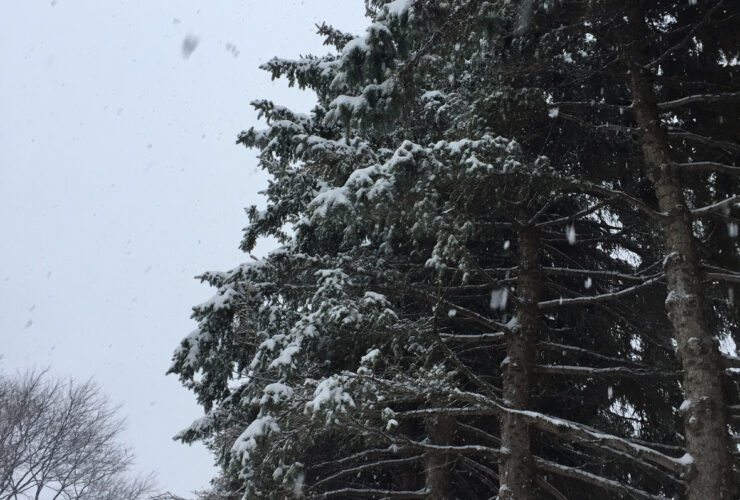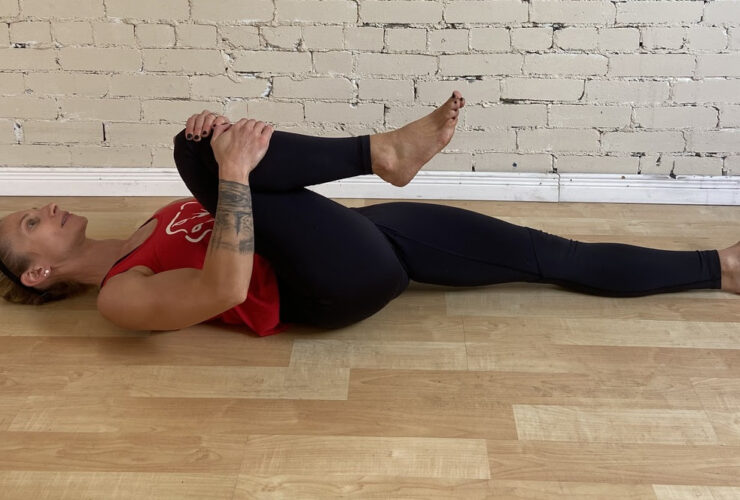Happy Fall 2021 + COVID Protocol Update
Transitioning to Fall: The Metal Element in Traditional Chinese Medicine
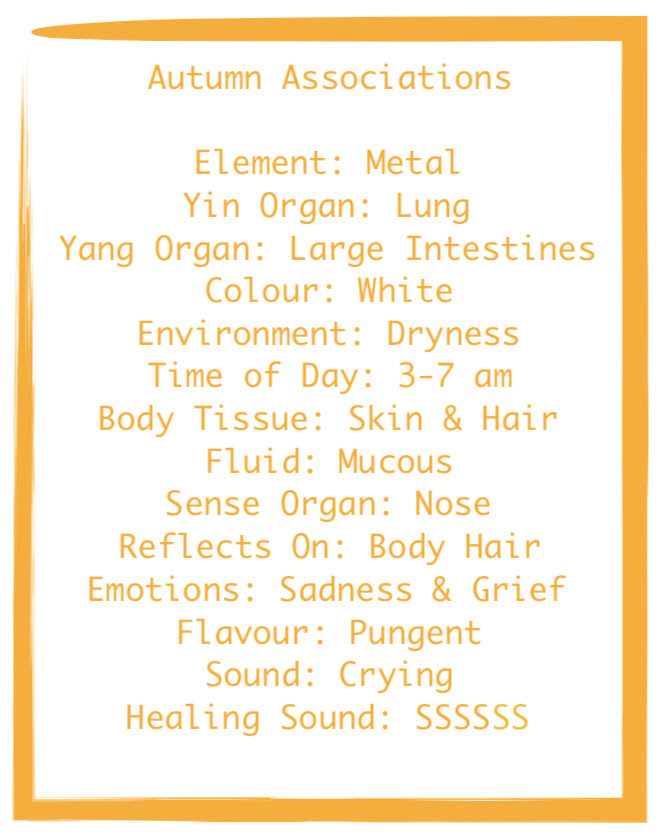
By Jennifer Keith R.Ac
In Traditional Chinese Medicine (TCM) it is the belief that good health results from the five elements (wood, fire, earth, metal, and water) being in harmony. By focusing on each element and it’s corresponding season as they arrive we can live in harmony, while preventing disease and disorder.
Seasonal Attunement
The ancient Chinese believed that seasons have a profound cyclical effect on human growth and well-being, and that we are influenced by climatic changes and should live in harmony with them. If we can learn to prepare for and live in harmony with the seasons instead of rebelling against them, they can be a time of beauty and comfort instead of something to dread. We can do this through the foods we eat, the way we dress, and how we deal with our emotions.
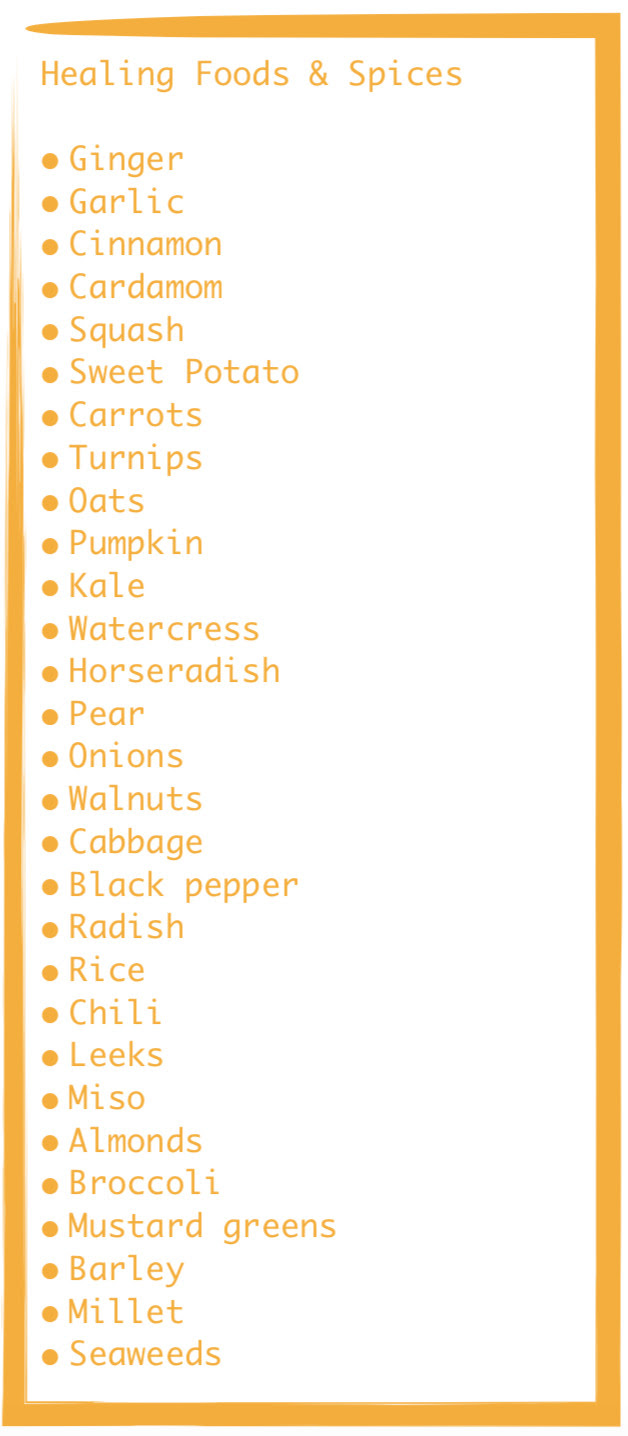
Fall Foods
As the leaves change and the cool crisp air rolls in it signals that it is time to leave the cooling and raw foods of the summer behind. Instead let’s reach for warming foods and spices, use longer cook times, and heartier ingredients, as these will nourish and support the immune system through the colder months. The perfect way to do this is through soups and stews. And since dryness is associated with fall we also need to nourish with moisturizing foods. You can look for foods that are white in colour, inside and out, think apples, pears, and cauliflower, as they regenerate body fluids, and lubricate your lungs. During fall it is important to choose pungent foods, this includes acrid, spicy, hot and aromatic flavours because they cleanse and protect the lungs and large intestines, as well as disperse any stuck mucous. As mentioned before we want to avoid cold, raw foods because in excess they create dampness and phlegm which gets stored in the lungs. In this case, we want to turn to foods like seaweeds, flaxseed and fenugreek for mucous membrane renewal and removal of mucous. And lets not forget about our dark greens and golden-orange vegetables, which are plentiful this time of year. Our golden-orange veggies are beneficial due to the protective effect of the beta-carotene (converted to Vitamin A) which protects the surfaces and mucous membranes of the body. Our dark greens on the other hand are full of chlorophyll which inhibits viruses and helps the lungs discharge residues from chemical fumes and cigarette fumes, while also improving the digestion of proteins and fats.
Weather
The Lung is considered a tender organ, it is the uppermost and susceptible to wind and cold invasion, leaving you vulnerable to coughs, colds and sore throats. While the lungs are responsible for a defensive energy call Wei Qi, that protects us from getting sick, if our lungs are weak, we are left vulnerable to an attack. So this time of year it is important to make sure we dress appropriately for the weather, scarfs are a particularly good idea as the neck is vulnerable to wind invasion.
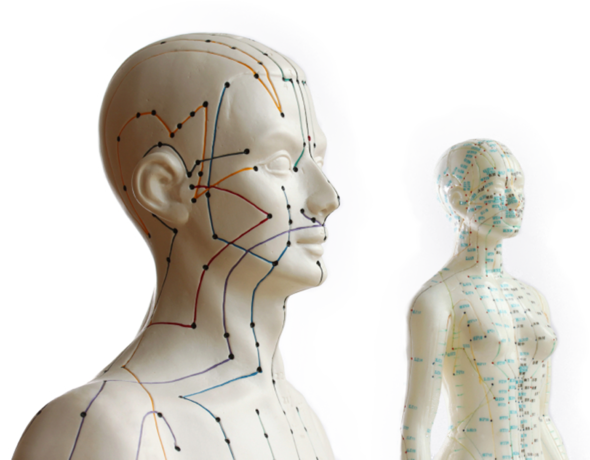
Emotions
Grief and sadness are the emotions associated with the lungs. Grief and sadness that is expressed and resolved, strengthens the lungs while repressed emotions cause functional issues in the lungs. If your lungs are healthy, one holds on to their principles, keeps their commitments and aren’t affected by loss and letting go. On the other hand, people with weak lungs, will have trouble letting go and attachment issues, usually related to possessions and relationships. And since the lungs are paired with the large intestines, which is responsible for releasing what is no longer needed, these people often suffer from chronic constipation. Try opening up and sharing feeling with others, and taking deep breaths in order to cleanse the lungs.
Physical Indication of Lung vitality
Lungs receive Vital Qi from the air we breath and mix it with Qi extracted from food
which is then distributed through the body to protect surfaces from viruses, bacteria and invading pathogens. The strength of the lungs depends on their Qi: people with strong Qi will be rewarded with a strong immune system, while weak Qi will be reflected as skin that is dry, dull and rough.
Fall brings about more cold and damp weather and less sunlight. This can be a difficult transition for many but with a little extra awareness and some help from your local Traditional Chinese Medicine Practitioner or Register Acupuncturist they can give you the boost you need to transition smoothly into and get through the new season.
Click to learn more about TCM Acupuncture and how Jennifer Keith R.AC can help!
Book your TCM Acupuncture treatment today!

Fall Stretch: Levator Scapula
By Stephanie Yankovich RMT
The levator scapula is a muscle located along the outer side of the neck. It attaches to the first four cervical vertebrae (C-1 through C-4) and runs down to the upper (inner) corner of your shoulder blade (scapula). Aptly named for its primary action of elevating the scapula (lifting your shoulder), levator scapula also helps you side bend your head and neck, and rotate your head to the same side. More practically, levator scapula is recruited when we look over our shoulder to change lanes while driving, or when we hold our phone between our ear and shoulder. If you’ve ever woken up with a stiff neck or pain after spending a prolonged period of time working at your computer, a tight or overworked levator scapula can often be the culprit.
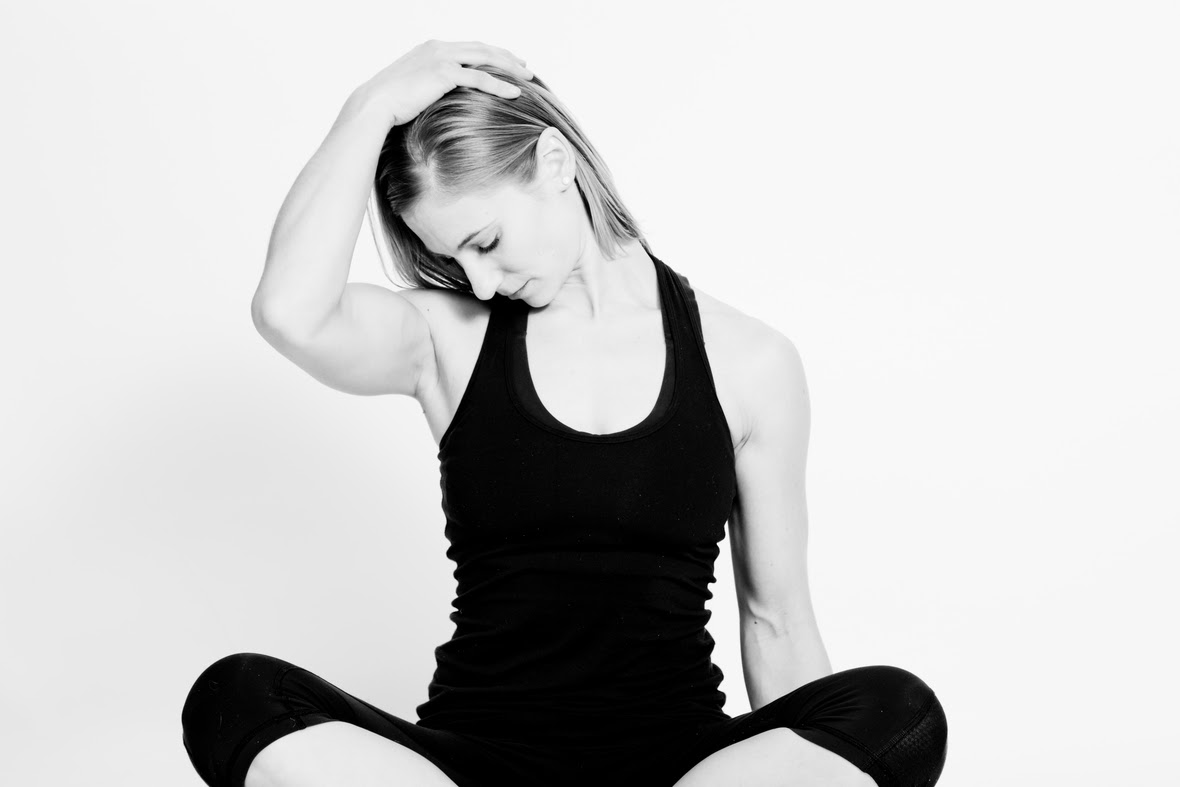
Levator Scapula Stretch: Advanced Option
Stretch:
We recommend doing a little warm up before you stretch to avoid injury, prepare your body, and to optimize the stretch. You can apply heat to the area you wish to stretch (heating pad or hot shower) and gently mobilize the area (in this case performing gentle neck circles or slowly rotating the head from side to side) before the stretch. Hold each stretch for at least 30 seconds while taking slow, deep breaths. Repeat the stretch 2-3 times, making sure to stretch both sides. Stretches should be pain free, so stop the stretch immediately if you feel any pain.
Basic Option:
To stretch levator scapula, first relax your shoulders and tuck your chin towards your chest. Keeping your chin tucked, gently angle your head 45 degrees towards your opposite shoulder and bring your nose towards your armpit. To stretch your right levator scapula, angle your head towards your left armpit and vice versa to stretch your left levator scapula.
Advanced Option:
If you’d like a more intense stretch (but not painful), try depressing your shoulder on the side you wish to stretch, before tucking your chin and angling your head towards your armpit, then use your opposite hand to gently apply pressure to your head and extend the stretch. Make sure to apply pressure while you exhale and allow your body to adjust to the new position before stretching further.
Hopefully these stretches will help bring you relief but please feel free to contact our team at Therapy Lounge if you have any questions, or if you wish to book a treatment.

Fall Essential Oil Spotlight + Selfcare: On Guard
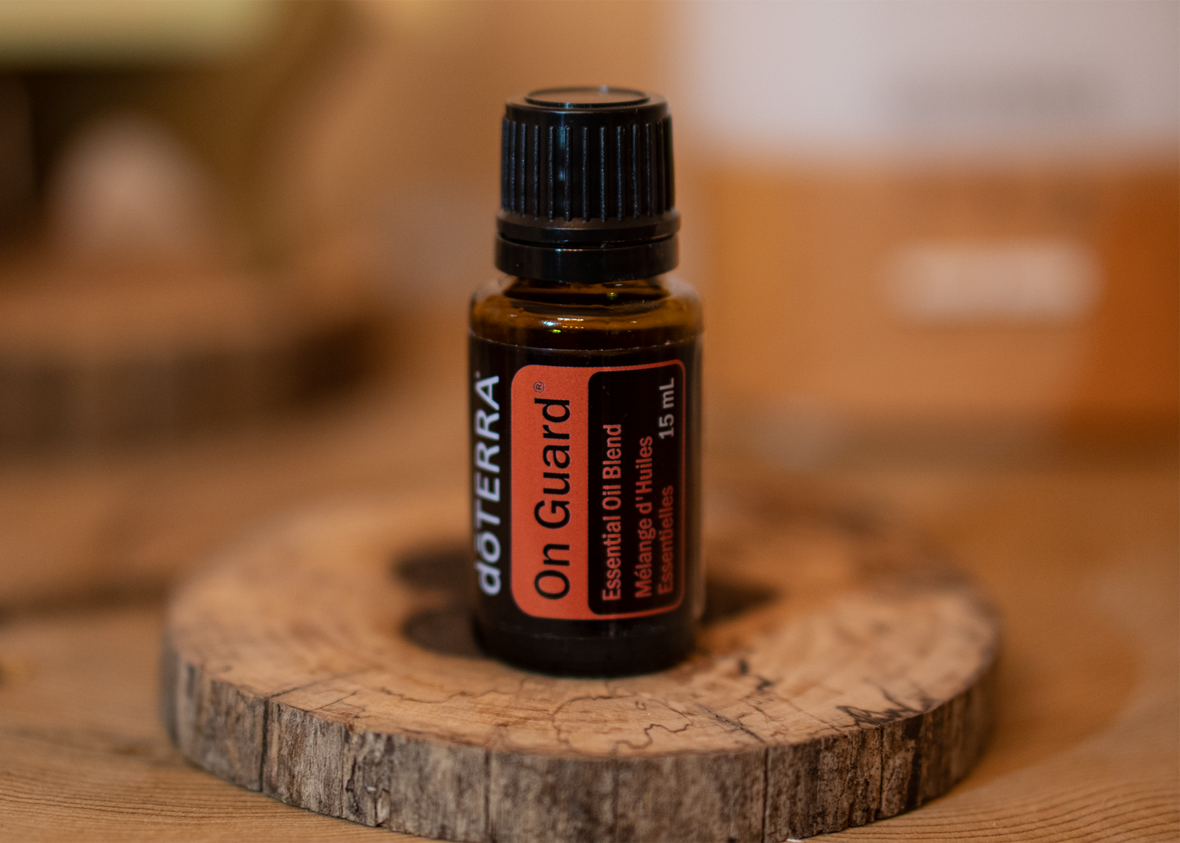
The On Guard blend has a spicy, energizing, uplifting aroma, and a chemical makeup that has cleansing properties. It has incredible uses and benefits for both body and home. With powerful immune-supporting properties, On Guard is well-known for its ability to protect against environmental and seasonal threats. An effective non-toxic cleaning agent that can be used to clean skin and household surfaces. On Guard can also be diffused to help cleanse and purify the air.
Ingredients: Orange Oil, Clove Bud Oil, Cinnamon Leaf Oil, Cinnamon Bark Oil, Eucalyptus Oil, Rosemary Oil
On Guard Essential Oil Uses:
*Diffuse to cleanse the air and to provide a positive, sweet, spicy aroma.
To Diffuse: Use 3-4 drops in the diffuser with filtered water.
Diffuser Blends
~Super Clean Air:
2 drops On Guard
+ 2 drops Peppermint
~Immune Booster:
2 drops On Guard
+ 2 drops Lemon + 2 drops Tea Tree
~Protect & Sleep:
2 drops On Guard
+ 2 drops Lavender
*Apply topically to the chest and bottoms of feet when seasonal threats are high, to increase circulation and to experience its energizing, uplifting aroma.
Topical use: Dilute 1 drop with 5-10 drops of carrier oil to minimize skin sensitivity.
*A DIY cleaner that will work well for most cleaning jobs around the house.
All-Purpose Cleaner:
2 cups of Water
2 tbsp of OnGuard Concentrate
(OR 4 tbsp of Liquid Castile Soap)
20 drops of OnGuard Essential Oil
(OR 10 drops OnGuard EO and 10 drops Peppermint EO)
Combine ingredients into a glass spray bottle. Spray on desired surfaces and wipe clean with a damp cloth.
CAUTIONS:
Possible skin sensitivity. Keep out of reach of children. If you are pregnant, nursing, or under a doctor’s care, consult your physician. Avoid contact with eyes, inner ears, and sensitive areas. Avoid sunlight or UV rays for up to 12 hours after applying product.



